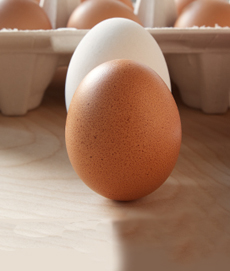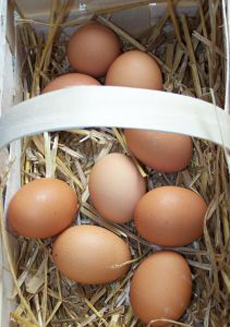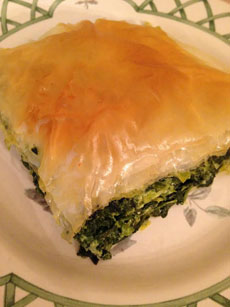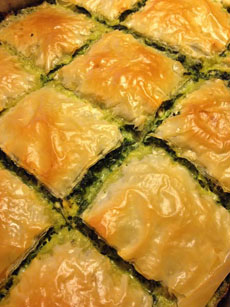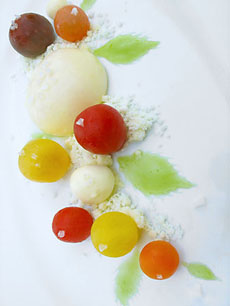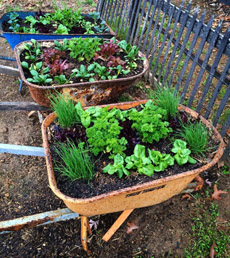|
Giardiniera (jar-dih-NYAIR-uh) is an Italian word that means “from the garden.” Veggies from the garden (or these days, from the store) are pickled in vinegar, herbs and spices (sometimes oil is added).
The result is a pickled condiment used like other pickles on burgers, eggs and sandwiches, from the classic muffaletta of New Orleans to the Italian beef sandwich in Chicago to an everyday ham and cheese. (See more uses below.)
Giardiniera adds crunch, tang, spice and often, heat, to perk up anything it touches. Low in calories and high in veggie nutrition, it’s a guilt-free addition.
TYPES OF GIARDINIERA
Bell peppers, carrots, cauliflower, celery, hot chiles and pitted olives are common, but you can add whatever appeals to you, including non-traditional ingredients like mushrooms and okra.
In Italy, giardiniera is also called “sotto aceti,” which means “under vinegar,” a common term for pickled foods. It is often made with carrots, cauliflower, celery, onions and zucchini in red or white wine vinegar.
There are mild and hot versions, the latter employing hot chile peppers.
|
|
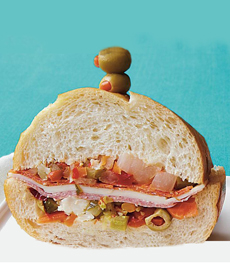
A muffaletta sandwich with giardiniera. Here’s the recipe. Photo courtesy Pillsbury. |
USES FOR GIARDINIERA
Appetizer: Time to revive the antipasto plate and relish tray.
Bloody Mary: Stir some in and provide a cocktail pick to spear the veggies.
Condiment: Place a bowl on the table with the main course. Giardiniera is especially delicious with grilled foods and casual foods (burgers, franks, sandwiches).
Eggs: Fold into scrambled eggs and omelets; serve as a condiment with other egg dishes.
Pasta: Toss giardiniera with any cooked pasta; add to oven-bound stuffed shells or other baked pasta recipes, including lasagna.
Pizza: Spoon it on! If making a frozen pizza, spread giardiniera over the top before placing it in the oven so it bakes right.
Salads: Add giardiniera into a tossed salad, tuna or chicken salad, pasta salad or potato salad for instant punch and color.
Sandwiches: grilled cheese, meatball, muffaletta, submarine or any basic sandwich
Side: make “Italian cole slaw” by mixing with shredded red cabbage
Snack: Tangy and crunchy!
|
|

You can buy giardiniera in almost any food
market. Photo courtesy Mezzetta.
|
|
RECIPE: MAKE YOUR OWN GIARDINIERA
Enjoy it at home and bring a jar full as a house gift. After you make the first batch, you’ll be able to adjust the ingredients to create your ideal “signature” blend.
You can cut the vegetables as you like, from chunky to a more finely diced relish.
Ingredients
2 cups water
1/4 cup table salt
1 cup small-diced carrots
1 cup cauliflower florets
4 to 8 serrano chiles, sliced
2 cloves garlic, minced
1 stalk celery, diced small
1 red bell pepper, diced small
2 cups wine vinegar (red or white)
1 tablespoon dried oregano
1/2 teaspoon freshly ground black pepper
*Use good vinegar, and never distilled white vinegar.
|
Plus your choice of these optional ingredients:
Fennel
Gherkins
Jalapeño chiles, sliced
Mushrooms
Okra
Olives, green and/or black olives, pitted and halved
Oil: canola, olive, soybean or vegetable
Pimiento (roasted red bell pepper)
Spices: parsley, red pepper flakes
Pepperoncini
Preparation
1. COMBINE water and salt in a non-reactive bowl; mix to dissolve. Add the vegetables and garlic. Cover and refrigerate overnight.
2. DRAIN and rinse the vegetables. In a clean bowl, mix together the vinegar with the oregano and pepper. Add the vegetables and mix to combine. Allow to marinate overnight in the fridge, or up to two days.
3. MOVE to an airtight container. Giardiniera improves over time, and will keep in the fridge for 2 to 3 weeks or longer.
THE QUESTION OF OIL
Classic giardiniera does not contain oil, but some people enjoy the extra richness it provides.
Note that if you use oil in your marinade, it will cloud up in the fridge. But will become clear again at room temperature.
|
|
